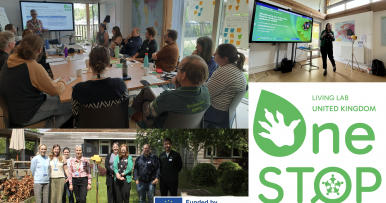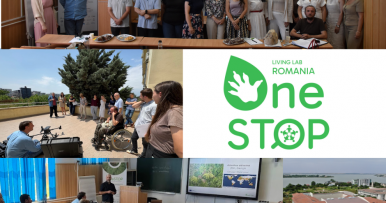Testing a tool for detecting IAS during the second meeting of OneSTOP’s Living Lab in Belgium
Authored by Louise Hendrickx from Meise Botanic Garden and Nadya Denkova from Pensoft Publishers.
OneSTOP’s Belgian Living Lab had its second meeting on 21 October in Zutendaal. It focused on using CamAlien for monitoring and detection of invasive alien species. The meeting was featured on numerous Belgian media channels, such as De Standaard, VRT NWS and Radio 2 Limburg, TVL, and BrusselsMorning, as well as in a blog post shared by Meise Botanic Garden.
CamAlien is a smart camera, mounted on a vehicle, which takes thousands of photos during drives and automatically links them to GPS coordinates. Using AI, the system recognises plant species that pose a threat to local biodiversity.
The test in Zutendaal was the first time the system was used in a forested environment in Flanders. Until now, it had mainly been applied along waterways and roadsides. This use of CamAlien allowed participants to see how the technology performs under more challenging conditions, such as shade, dense vegetation, and changing light.
“By applying artificial intelligence, we can detect invasive species faster and more accurately. This makes nature management not only more efficient, but also more sustainable,” says Louise Hendrickx, researcher at Meise Botanic Garden.
Data on where species have been spotted can now be explored via the CamAlienViewer. The data collected will help track the spread of invasive species over time and assess how effective management measures are. This makes it easier for forest managers to pinpoint where action is needed and to align their management plans more closely with what is happening in the field.



